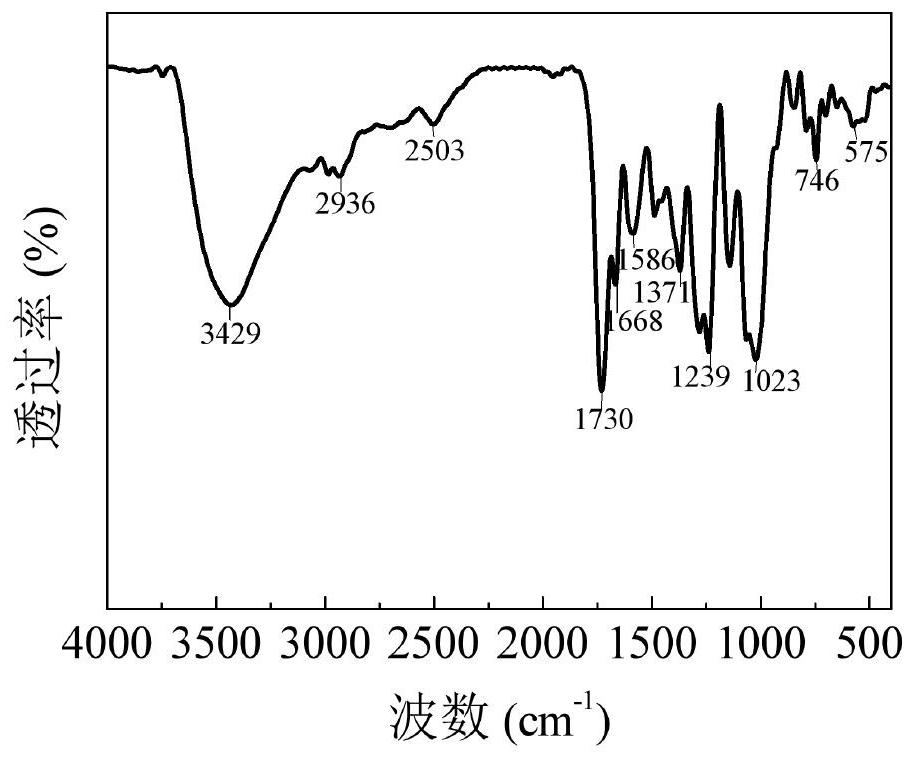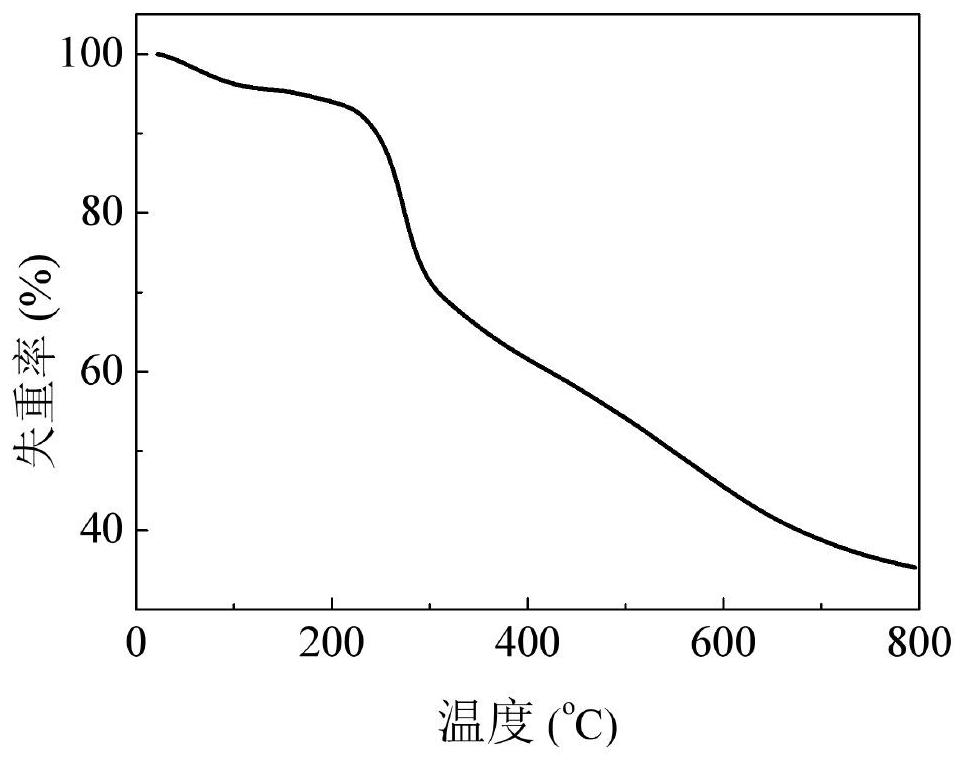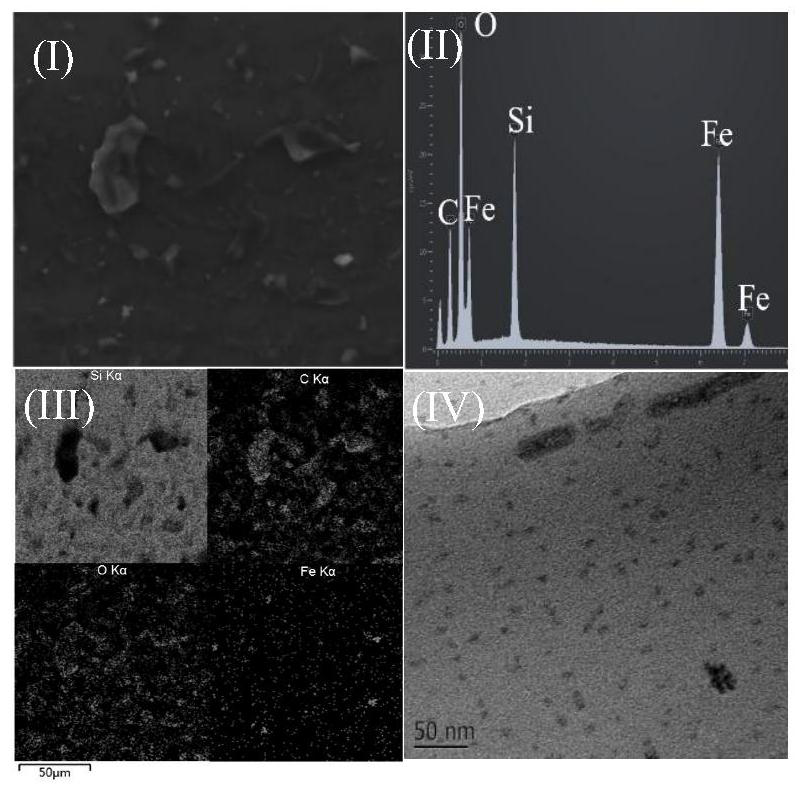A kind of magnetic polymer nano adsorption material lm-mp and its preparation method and application
A nano-adsorption material, LM-MP technology, applied in alkali metal compounds, chemical instruments and methods, adsorption water/sewage treatment, etc., can solve the problems of difficult recovery, small adsorption capacity, difficult regeneration, etc., and achieve easy modification and easy Modification, not easy to secondary pollution effect
- Summary
- Abstract
- Description
- Claims
- Application Information
AI Technical Summary
Problems solved by technology
Method used
Image
Examples
Embodiment 1
[0030] Embodiment 1: a kind of preparation method of magnetic polymer nano adsorption material LM-MP comprises the following steps:
[0031] 1) Preparation of polymer material LM-P:
[0032] First, add 2.45g LM and 2.5mL triethylamine to 10mL DMSO in turn, stir rapidly until the solution is clear, add 5.64g PDA, and react at room temperature for 24h to obtain a block-like gel-state product. After the gel-state product is ground Acetone precipitation was carried out, and the precipitate obtained by suction filtration was washed and filtered with 300mL ultrapure water and freeze-dried to obtain 5.6g of white powder, the polymer material LM-P;
[0033] 2) Preparation of magnetic nanoparticles MNP@LM-P:
[0034] 1.0g FeCl 3 ·6H 2 O, 0.45g FeCl 2 4H 2 0 and 0.9g of LM-P obtained in step 1) were placed in a three-necked flask, 200mL of ultrapure water was added, stirred and heated to 80°C under nitrogen protection, and concentrated ammonia water was added dropwise after 5min to...
Embodiment 2
[0042] Example 2: Adsorption of cationic dyes by LM-MP
[0043] 1) Effect of pH on adsorption performance
[0044] Measure the absorbance of LM-MP before and after dye adsorption under pure water and different pH (2-10) conditions, and explore the effect of pH on the adsorption performance of LM-MP, such as Image 6 .
[0045] from Image 6 It can be seen that under the conditions of strong acid and strong alkali, the adsorption performance of LM-MP is relatively weakened. Under the conditions of , 7, 8, 9 and secondary water, the adsorption performance is better, so it can be concluded that the adsorbent has a wide range of applications, and the follow-up experiments are all carried out under the condition of secondary water.
[0046] 2) Effect of ionic strength on adsorption performance
[0047] Measure the absorbance of LM-MP before and after dye adsorption in NaCl solution at different concentrations (0, 0.01, 0.1, 0.5, 1, 1.5, 2mol / L), and explore the effect of ionic ...
Embodiment 3
[0063] Embodiment 3: Desorption and reuse experiment
[0064] The complex uses absolute ethanol as the eluent, ultrasonically oscillates for 10 minutes, then magnetically separates, then washes three times with secondary water and absolute ethanol, and vacuum-dries at 40°C to obtain desorbed magnetic polymer nano-adsorption materials. Recycle. This cycle was repeated 6 times, and the adsorption amount of the dye by LM-MP in each cycle was calculated, as Figure 13 .
[0065] It can be seen from Figure 13 that after LM-MP is reused 6 times, the adsorption efficiency is still maintained, and some dyes have increased, indicating that LM-MP is a reusable dye adsorption material. It shows that the complex has a good application prospect in environmental water purification.
PUM
| Property | Measurement | Unit |
|---|---|---|
| Saturation magnetization | aaaaa | aaaaa |
| Total pore volume | aaaaa | aaaaa |
| Average pore size | aaaaa | aaaaa |
Abstract
Description
Claims
Application Information
 Login to View More
Login to View More - R&D
- Intellectual Property
- Life Sciences
- Materials
- Tech Scout
- Unparalleled Data Quality
- Higher Quality Content
- 60% Fewer Hallucinations
Browse by: Latest US Patents, China's latest patents, Technical Efficacy Thesaurus, Application Domain, Technology Topic, Popular Technical Reports.
© 2025 PatSnap. All rights reserved.Legal|Privacy policy|Modern Slavery Act Transparency Statement|Sitemap|About US| Contact US: help@patsnap.com



